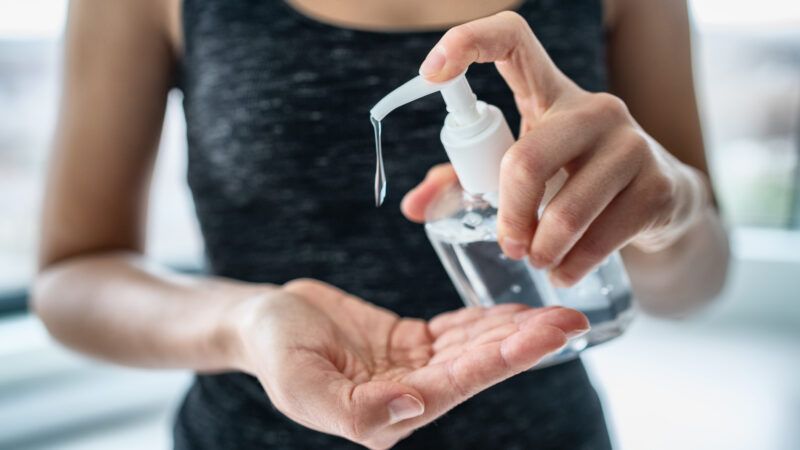The FDA Warns That Hand Sanitizer 'Can Cause Serious Injury' If You Put It in Your Eyes
"These are the same people who could not approve an at-home COVID-19 test for a year."

(Martinmark | Dreamstime.com)
Last week the government issued a press release sure to distress anyone who was about to sanitize their hands: "FDA warns that getting alcohol-based hand sanitizer in the eyes can cause serious injury."
This is scary stuff. Everyone I know carries hand sanitizer at all times, particularly since the pandemic. Is hand sanitizer blinding an entire generation?
Well, not quite. It seems that, perhaps lacking other public health emergencies to deal with, the government decided to study the issue of eye injuries hand sanitizer might be causing. To do so, it reviewed calls to poison control centers, as well as the academic literature on sanitizer eye injuries, from January 1, 2018 trough April 30, 2021. That is, it studied two and a half years' worth of ocular incidents, starting a year before COVID-19 right on up through its crest. And in a country of 330,000,000 people over the course of 1,215 days, what horrible truth did the FDA discover?
Precisely "3,642 cases of side effects resulting from eye exposure to these hand sanitizers." How many of those folks went blind? Zero.
How many of them required eye surgery?
Zero.
So what were the horrific "side effects" discovered by the FDA? Eye irritation and "red eye."
But that's not quite the whole story, the agency hastened to add. Among those 3,000+ cases of eye irritation, 58 were categorized as "more serious." These were treated via a radical intervention known as "rinsing the eye." Twenty-six of those folks also received antibiotics. In the end, 51 of the 58 were treated and released, but I don't think you have to worry that the other seven eventually turned up at guide dog orientation. Their particular cases "were either not followed or were minor."
The FDA adds that when it reviewed two other publications, it encountered 18 cases of "eye exposure" in children that required treatment in a hospital or by a health care professional (which I assume could include a school nurse). Ten had some eye damage, and two required surgery. And another study reported on two children who needed several days of eye-washing and medicine for their problems to resolve.
While that obviously must have been disturbing for those families, why is the government publicly warning us about something that happened to a truly minimal number of people when hundreds of millions of people are using this stuff day in and day out with no eye damage?
"Our policies follow our fears, not the facts," says David Ropeik, author of How Risky Is It Really?. We are a culture that distrusts chemicals and fears for our kids on almost every front. "Raising the alarm on behalf of public safety feels like a public service," Ropeik says. Even when it's not.
And as chemist Josh Bloom, Director of Chemical and Pharmaceutical Science at the often-skeptical American Council on Science and Health, points out: "There are few chemicals that won't do damage if you get them in your eye."
The FDA also warns about the dangers of breathing in hand sanitizer vapors, having discovered 50 adverse incidents over the course of 11 years. That's almost five a year, or one incident for every 66,000,000 people. For comparison, your odds of dying in a lacrosse incident are 1 in 22,000,000.
"These are the same people who could not approve an at-home COVID-19 test for a year," says John Tierney, former New York Times science writer and author of The Power of Bad.
Blame it on the Purell fumes.
